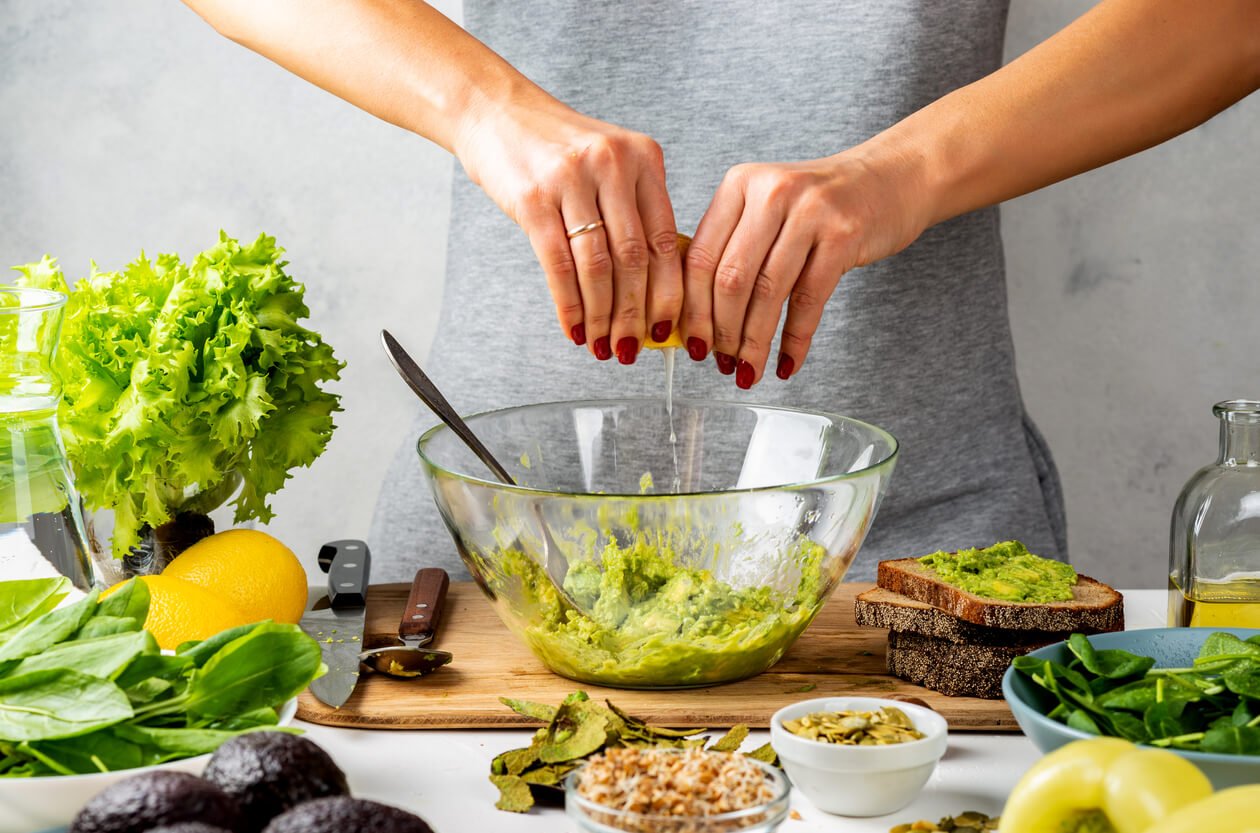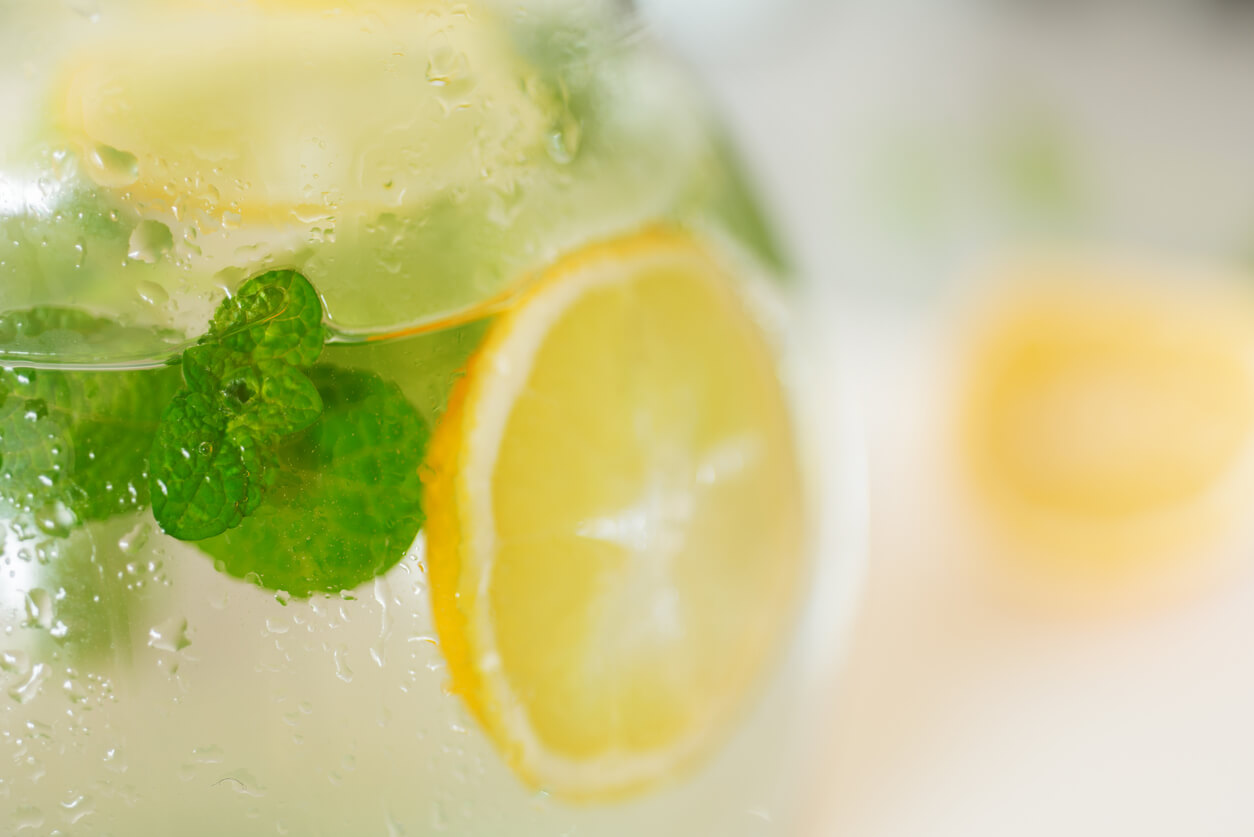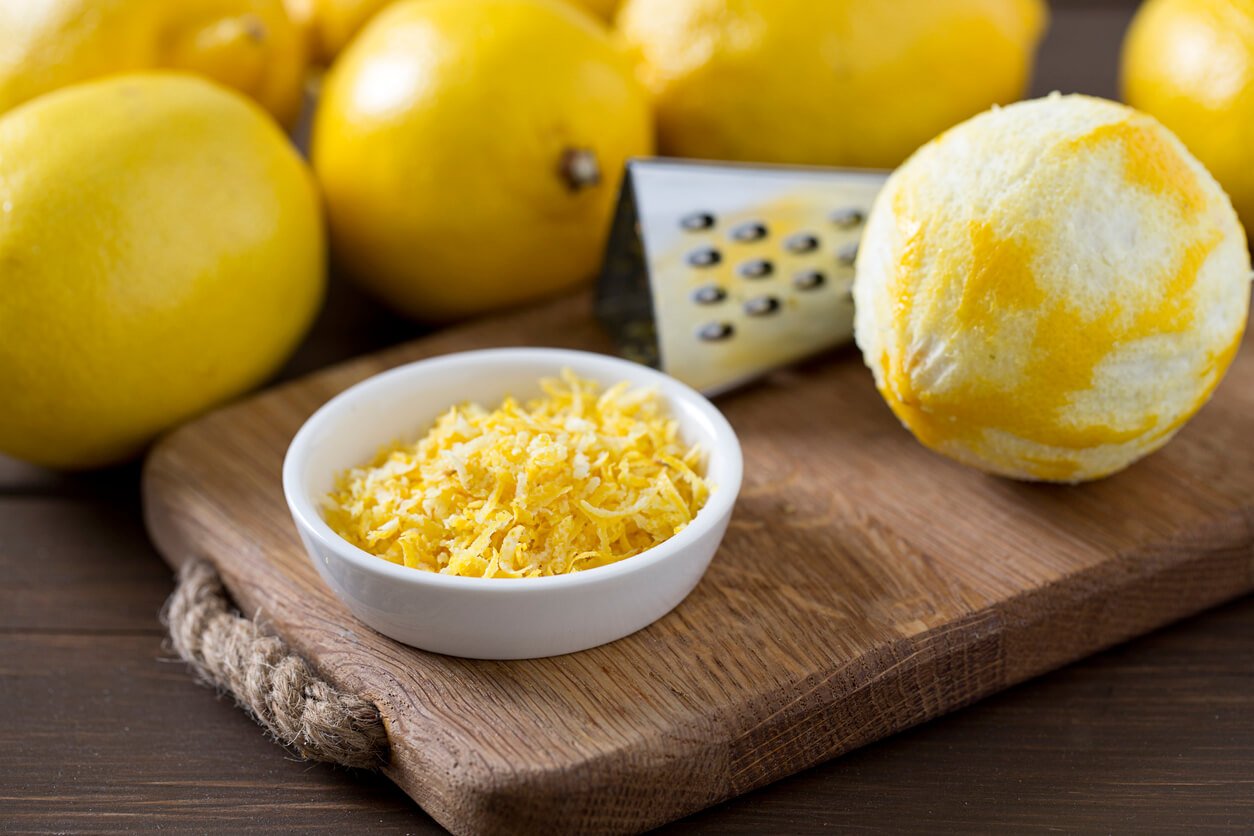If your vehicle is a lemon, that means it rolled off the assembly line with big
problems. “When life gives you lemons” is shorthand for “when things go badly.” In Shakespeare’s Love’s Labour’s Lost, a character suggests that the god Mars’ gift to an unworthy Hector was a lemon. In short, for such a versatile, delicious, and healthy fruit, lemons have gotten pretty rotten press. In this article, I want to redeem the sour little fruit by exploring the many reasons (and ways) to add more lemons to your cooking.Despite their less than wonderful reputation, lemons have many uses in both cooking and baking; their distinctive sourness adds depth and tang to savory and sweet dishes alike. Lemons, as we’ll see below, also feature prominently in some wonderful beverages, far beyond lemonade.
We associate lemons with summertime and warm weather cooking, which makes sense as they ripen through a season of warm weather and many long hours of daylight. The Mediterranean diet, renowned as one of the world’s healthiest widely adopted eating patterns, relies on lemons to flavor many of its iconic dishes.
Lemons contribute more than just taste, however. Thanks to their high vitamin C content (a single lemon provides nearly half of your daily requirement of the nutrient, though due to an absence of data, we don’t know if the same is true of married lemons, ba dum bum). Like all whole plant-based foods, lemons’ health benefits derive from a complex synergy of various phytonutrients, other vitamins, minerals, and even trace amounts of healthy fatty acids.
There are also chefs and foodies who swear that lemon can make just about anything taste better. Salty foods, sweet foods, and fatty foods can all be balanced and enhanced by the small but mighty yellow citrus fruit.
So, how can you skillfully add more lemon to your cooking? When should you use sliced lemons, or lemon juice, or even the outer skin (called the “zest”)? And, is there too much of a good thing? Are there downsides to consuming lemons on a regular basis?
Why Use Lemon in Recipes?

First — and most obviously — lemons add lemony flavor to dishes. As a charter member of the citrus family, the lemon hits both sweet and sour notes. In addition to adding its own distinctive flavor, the acidity of lemon juice and zest sharpens the other flavors in a dish. In some dishes, such as tomato sauce or mashed potatoes, a lemon can bring out the other scents and tastes while remaining undercover itself. Some cooks and chefs consider lemon as important a flavor enhancer as salt, using the peel (or a slice or wedge) as a garnish, or adding juice or zest at the end of cooking as a finishing touch.
Lemons are versatile, equally at home in sweet and savory dishes. Both salt and natural sugars combine well with the citric acid in lemons. That acid can enhance and intensify the chemical reactions that occur during the baking process. If you bake and don’t use animal ingredients, then lemon juice (or straight citric acid powder) can help substitute for animal-based ingredients like eggs and buttermilk and contribute to leavening. (Not-so-fun fact: Commercial citric acid powder used to come from lemon juice, but is now mass-produced by feeding sugar to a particular fungus.)
Lemons can also affect the texture and color of other plant foods. Lemon juice can help red foods (including red cabbage, red grapes, plums, cherries, cranberries, strawberries, and raspberries) retain their color and not turn purple or blue. This color enhancement is not a universal phenomenon, though — lemon juice can cause greens to fade if added too early in the cooking process.
Lemon juice can also inhibit the browning caused by oxidation in cut fruits like apples, pears, bananas, peaches, and avocados. Guacamole, for example, stays green for a good while if there’s enough lemon juice in it — but try lemonless guac, and you’ll be in for a grey-brown mess in short order.
As if all these culinary benefits weren’t enough, lemons provide significant benefits to human health as well. They’re anti-inflammatory and antimicrobial, and they offer protection against cancer and parasites. Lemons are high in antioxidants, most notably vitamin C (your average lemon contains almost 31 milligrams), which can strengthen immunity, aid in the absorption of iron, and prevent the development of chronic disease. Lemons are also good sources of flavonoids — which are, surprisingly, not tasty robots, but rather phytonutrients responsible for an astounding array of health benefits in the human body.
Tips for Using Lemon Juice

The big question here is: How much juice is in one lemon? If your recipe calls for two tablespoons, how many lemons do you need to buy? The answer is, it depends on the size, ripeness, and variety of the lemon, as well as the thickness of its skin. If that’s too wishy-washy for you, let’s say that the average lemon contains about three tablespoons of juice. If you’re buying lemons by the pound, figure that a single pound will give you about three-fourths of a cup to a whole cup of juice.
Most healthy food lovers prefer fresh lemon juice over artificial lemon flavoring, which comes from petrochemicals. But, you can also buy real lemon juice in a glass bottle, or even in a squeezable plastic bottle that looks like a lemon. While this will do in a pinch, it’s still not as good as the juice you squeeze in your kitchen right before cooking. Bottled juice often contains preservatives, and will rarely taste as good as fresh-squeezed. Also, bottled juice is often concentrated — so using the amount the recipe calls for can sometimes overwhelm the dish (and your palate).
So, how should you juice that fresh lemon? You can go extremely low-tech: Cut the fruit in half, dig a knife or fork into the inner flesh, and squeeze with your hand. The next step up is a lemon reamer, which is a crenellated piece of wood or plastic that you hold in one hand and twist the cut lemon against to release the juice. Put that crenellated head in the center of a dish and you’ve got a manual hand juicer; turn the lemon half left and right while pressing down to juice it. There are also hand juicers that involve squeezing rather than rotating the lemon, using a long arm for leverage.
If you’re going to be juicing a lot of lemons (or just prefer using motors to muscles), there are some very efficient electric juicers on the market. You can check out a wide variety of types here.
Using Lemon Juice in Recipes

When cooking with lemon juice, wait until the dish has almost finished cooking before adding it. This preserves the lemon’s water-soluble vitamins, such as the famous vitamin C.
You can also squeeze fresh lemon juice over just about any dish. It goes well in most sauces, including pesto, tomato sauce, plant-based tzatziki, salad dressings, and more. Almost any time you might use vinegar in a sauce, you can substitute lemon juice. Lemon juice also fits perfectly into dips like hummus or cashew cheese.
As we’ve seen, lemon juice can act as a leavening agent in baked goods in the absence of eggs and buttermilk. Lemon juice can also add flavor and enhance colors and textures in soups, stews, and chilis.
Finally, there’s almost no end to the ways you can use lemon juice in beverages. From the classic lemonade to the more sophisticated iced tea, from mocktails to smoothies, lemon juice can jazz up most cold beverages.
One word of caution: The high acidity in lemons can harm dental enamel and promote tooth decay. Here’s a pro tip for dental hygiene: After drinking a beverage that contains lemon juice, protect your pearly whites by rinsing your mouth with water. To be doubly protected, pop a xylitol gum or mint to alkalize your mouth.
Tips for Using Lemon Zest

Unlike the word “lemon,” with its multiple negative connotations, the word “zest” is wholly positive. Happy and energetic people have a zest for life. Things that are full of zest add enjoyment and excitement.
When it comes to lemons and other citrus fruits, the zest is the delicious and extremely concentrated outer skin. Here’s the anatomy of a lemon: The outer yellow layer is the zest, next comes the white pith (which most people don’t eat as it tastes bitter), and inside of that is the fruit itself (with juice, pulp, and seeds).
In culinary parlance, the zest is actually the outer skin after it has been grated or shredded into fine pieces — an act that releases its pungent oils. The taste of zest is more concentrated than that of juice, and contains a hint of bitterness. Recipes also use the word “zest” as a verb, as in, “Zest one lemon.”
Your average lemon (you know, the one with three tablespoons of juice) will yield about one tablespoon of zest. You get the zest by using a tool such as a fine grater or a microplane, which will give the finest pieces. Make sure to wash the skin well to remove pesticides, and buy organic whenever possible. Also, if you have a recipe that calls for both zest and juice, zest the lemon first and then juice it. Trying to zest a lemon that has been squeezed is an awkward and inefficient process (I speak from experience).
Use lemon zest when you want to add flavor to a recipe without adding more liquid. You can sprinkle zest over salads, use it in salad dressings and other sauces, and garnish curries, soups, stews, and chilis. You can punch up the lemon-ness of baked goods (zest is awesome in lemon muffins, for example), sprinkle it over grain or oatmeal bowls, and use it as a tasty and colorful topping for plant-based yogurts.






Комментариев нет:
Отправить комментарий